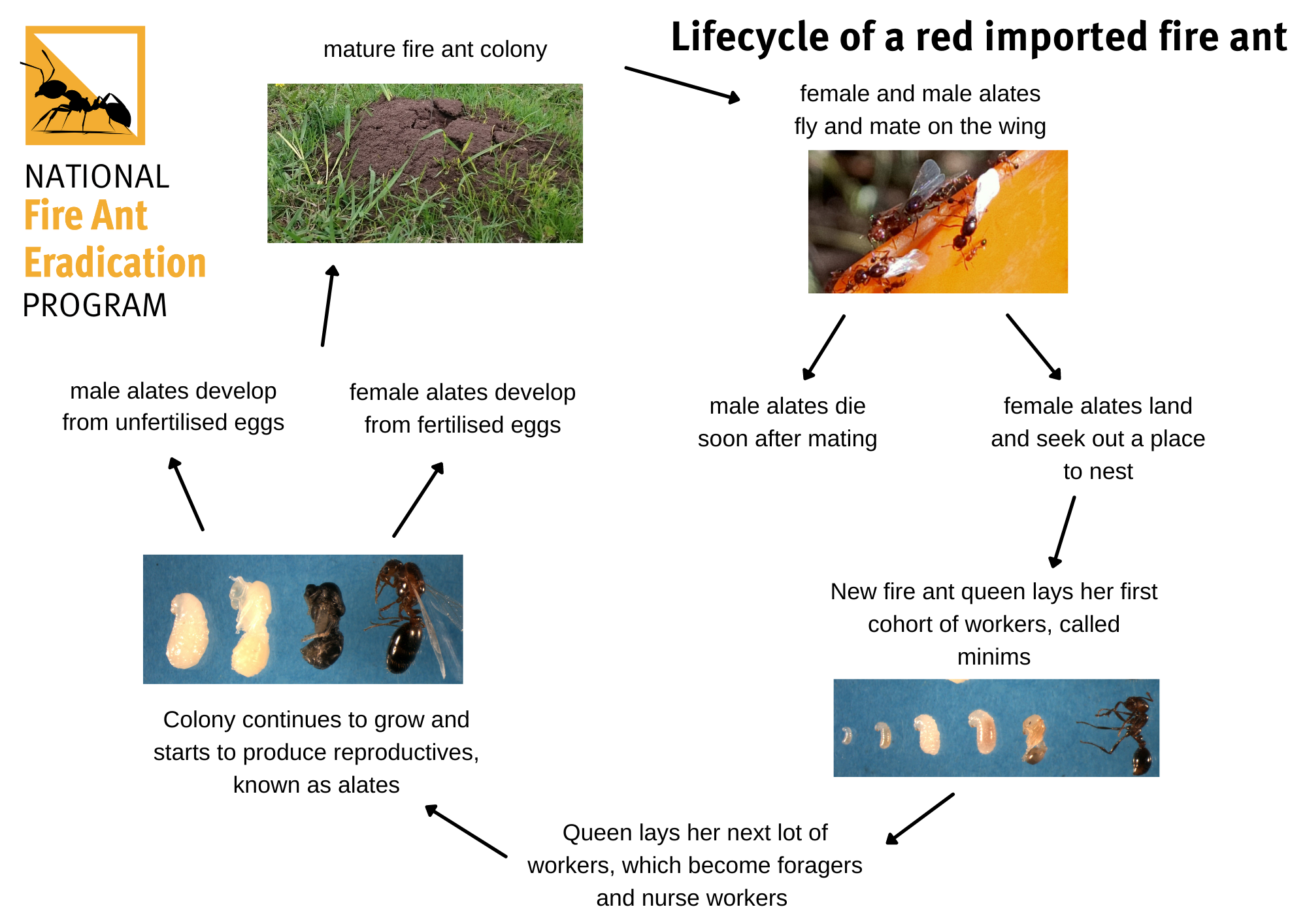Like other ant species, fire ants reproduce quickly.
It is common for individual fire ant nests to contain thousands of ants, with a year-old colony having as many as 10,000 workers.
By 3 years of age, a colony could contain as many as 100,000 individual ants — comprised of three distinct groups that have very different functions.
Images courtesy of Texas A&M University.
The fire ant life cycle has 4 stages and takes approximately 1 month.
- The fire ant queen lays eggs. A new queen can lay up to 20 eggs per day and a mature queen up to 5000 eggs per day — equivalent to her own body weight.
- Up to 16 days later, the pupae develop into adult ants and take their position in the community.
- The eggs hatch 6–10 days later and become larvae — unfertilised eggs develop into winged male fire ants while fertilised eggs are all female. Most females become sterile adult workers, however female larvae that receive more food than their sisters become winged reproductive alates.
- After 12–14 days, the larvae become pupae. During this stage they do not eat and spend their energy transforming from their larval stage into an adult ant, similar to the way a caterpillar becomes a chrysalis before it can emerge as a butterfly.

It generally takes 6 months to one year for a mature fire ant colony to produce alates.
The queen in a monogyne colony only cares for her very first offspring. Once this first brood reach adulthood, the workers take care of the young and the queen, allowing the queen to focus on producing more young to make her colony grow.

